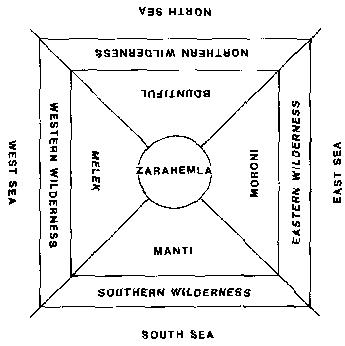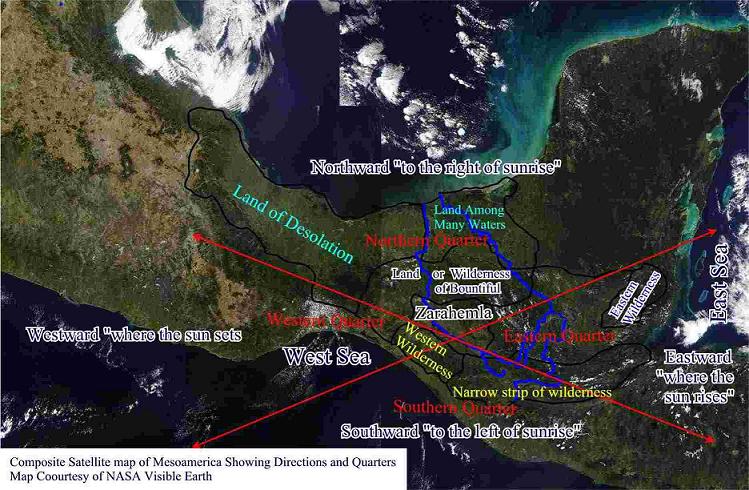
FAIR is a non-profit organization dedicated to providing well-documented answers to criticisms of the doctrine, practice, and history of The Church of Jesus Christ of Latter-day Saints.
mNo edit summary |
mNo edit summary |
||
| Line 14: | Line 14: | ||
Interestingly enough, Tepetzintla translates to ''Cerro de Maiz'' in Spanish or "Corn Hill" in English, which has been suggested as the meaning of the Hill "Shim."{{ref|warren1}} (Shim was the Jaredite hill identified by the Nephites as likely being in the same locality as "Cumorah"—see {{s||Mormon|1|3}}, {{s||Mormon|4|23}}; compare with {{s||Ether|15|11}}, {{s||Mormon|6|6}}). | Interestingly enough, Tepetzintla translates to ''Cerro de Maiz'' in Spanish or "Corn Hill" in English, which has been suggested as the meaning of the Hill "Shim."{{ref|warren1}} (Shim was the Jaredite hill identified by the Nephites as likely being in the same locality as "Cumorah"—see {{s||Mormon|1|3}}, {{s||Mormon|4|23}}; compare with {{s||Ether|15|11}}, {{s||Mormon|6|6}}). | ||
Poulsen suggests [http://maps.google.com/maps?f=q&hl=en&q=santa+rosa,+guatemala&sll=38.451976,-122.713165&sspn=0.115343,0.343323&ie=UTF8&z=6&ll=17.727759,-88.110352&spn=8.969893,21.972656&t=k&om=1 Santa Rosa] for the city of Zarahemla. | |||
Furthermore, Poulsen suggests the use of a "quadrant"-based directional system as used by some Mesoamerican groups,{{ref|poulsen4}} as opposed to arguing that the Nephites used cardinal directions off-set from magnetic north, as Sorenson does.{{ref|sorenson5}} <br> Clark's review of Hauck contained a similar suggestion that the Nephites conceptualized their world in a quadrant-based fashion (see image at right). | Furthermore, Poulsen suggests the use of a "quadrant"-based directional system as used by some Mesoamerican groups,{{ref|poulsen4}} as opposed to arguing that the Nephites used cardinal directions off-set from magnetic north, as Sorenson does.{{ref|sorenson5}} <br> Clark's review of Hauck contained a similar suggestion that the Nephites conceptualized their world in a quadrant-based fashion (see image at right). | ||
| Model Name | Date Proposed | Scope | Narrow Neck | Land North | Land South | Cumorah | River Sidon | Nephi's Landing | Religion | Type of model
Model name: Poulsen 2004Date proposed: 2004 |
|---|
| Lawrence Poulsen, stimulated by the models proposed by Sorenson and Hauck, used his own study of the text, combined with advances in 3-D computer mapping technology and satellite maps to provide a fascinating refinement of the Mesoamerican model.[3] Poulsen compares Sorenson's River of Sidon suggestion (the Grijalva River) with Hauck's (the Usamacinta River) and finds Grijalva much more plausible.[4] Poulsen extends this analysis to show how the explorers mentioned in Mosiah 8꞉7-10 likely mistook Usamcinta for Sidon/Grijalva, thus becoming hopelessly lost. The Book of Mormon text is even accurate in the direction which the Sidon flows at a critical point.[5]
This Cumorah candidate is about 110 miles north of Tepetzintla (which, at 4040 feet high he identifies as a potential Hill Shim). Interestingly enough, Tepetzintla translates to Cerro de Maiz in Spanish or "Corn Hill" in English, which has been suggested as the meaning of the Hill "Shim."[6] (Shim was the Jaredite hill identified by the Nephites as likely being in the same locality as "Cumorah"—see Mormon 1꞉3, Mormon 4꞉23; compare with Ether 15꞉11, Mormon 6꞉6). Poulsen suggests Santa Rosa for the city of Zarahemla. Furthermore, Poulsen suggests the use of a "quadrant"-based directional system as used by some Mesoamerican groups,[7] as opposed to arguing that the Nephites used cardinal directions off-set from magnetic north, as Sorenson does.[8] |
 |
 |

FAIR is a non-profit organization dedicated to providing well-documented answers to criticisms of the doctrine, practice, and history of The Church of Jesus Christ of Latter-day Saints.
We are a volunteer organization. We invite you to give back.
Donate Now